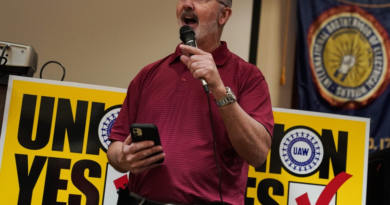Consumers are so demoralized by inflation and high rates they've given up on saving for the American Dream and are spending money instead, economist says
An economist offered an explanation for a paradox that has emerged in recent data showing that spending has remained robust even as consumers report feeling pessimistic.
Joanne Hsu, who is the director of the University of Michigan’s consumer sentiment survey, told CNBC on Friday that she thinks Americans have abandoned plans to save money as they see their financial goals look less attainable and are spending money instead.
“This positive spending is not a reflection of some sort of internalized secret sense of confidence that consumers have,” he explained. “And instead my interpretation is that consumers see that a lot of aspirational goals that we talk about as part of the American Dream—homeownership, paying for college, paying for college for your kids, having a comfortable retirement—with high prices and high interest rates right now, those aspirational goals just feel increasingly out of reach.”
And as a result, consumers have “given up” on saving for those goals, Hsu added, noting that the still-strong labor market allows them to spend now.
The latest reading of the University of Michigan’s survey showed sentiment plunged to a six-month low of 67.4 in May from a final reading of 77.2 in April as Americans cited stubbornly high inflation and interest rates, as well as fears that unemployment could rise.
While that report was followed days later by the April consumer price index that showed inflation cooled, it followed three straight months of unexpectedly high prices. Consumer-facing companies have sounded the alarm on the impact that inflation and high rates are having, especially on lower-income shoppers.
To be sure, inflation has come down sharply from the four-decade-high 9% rate in mid 2022 to 3.4% last month. But that means prices are going up less quickly rather than returning to pre-pandemic levels, and the cumulative sticker shock over the last few years still weighs on sentiment.
Meanwhile, gauges for consumer demand have held up. In the first quarter, it continued to drive GDP growth. And despite a weak retail sales report, analysts have noted the overall trend points to continued spending.
For now, consumers expect the strong labor market to persist, giving them enough confidence to spend, but the latest data show some softening, Hsu warned.
“That’s possibly an early sign of oncoming weakness for consumers. But as of now, strong incomes are supporting consumer spending,” she added.
But the labor market has also hinted at some cooling off after blockbuster gains earlier this year. The Labor Department’s April jobs report came in well below expectations, while the unemployment rate ticked up to 3.9% from 3.8% in March.
Further cooling in the job market could also help nudge the Federal Reserve to start cutting interest rates, giving consumers a reason to be slightly less dour.


